SITE HOARDINGS & SIGNAGE
Testimonials
“MJCP printed and installed the hoarding for our largest development in the UK to date. In under one year we received over 40,000 hits to the website and received over 200 enquiries through direct results of the work MJCP had carried out for us.”
— Marketing Manager,
Akelius Residential UK.”
Site Hoardings for Brand Promotions
While site hoardings fulfill a practical safeguarding role, they also give the opportunity to display stunning graphics and promotional information in a very large format. They offer a really cost-effective, large-scale sales & marketing statement to promote your brand.
More Juice Creative Print are specialists in the printing and installation of hoardings and has installed many large projects across the UK. Our services are carried out in-house and our project managers will consult, advise and liaise from concept to completion to ensure high-impact results are delivered.
Our Project Management Service
We provide a full project management service for your hoarding & signage printing, from the conception of the brief through to delivery, installation, and aftercare.
FAQS
-
A site hoarding is a temporarily boarded barrier usually used to shield and surround a building site mostly in public areas. They are also constructed to protect the general public from ongoing work and construction on a building or site. While they fulfill a practical safeguarding role, they also give the opportunity to display stunning graphics and promotional information in a very large format. These make them ideal for striking sales, marketing, or information campaigns on your site.
-
The size of site hoarding panels that can be supplied may vary depending on the supplier and their capabilities. However, it is common for site hoarding panels to be as large as 3 meters (10 feet) in height and 1.5 meters (5 feet) in width. It's best to consult with our project managers to determine the maximum size of site hoarding panels we can provide.
-
The level of UV protection provided for printed and sealed site hoarding panels will vary depending on the materials and processes you choose. We use UV-resistant inks or coatings to help protect the print from fading or deteriorating over time. Additionally, some materials used for site hoarding panels, such as aluminum composite material (ACM), naturally have some degree of UV protection. It's best to check with the us to determine the level of UV protection we can provide for your printed and sealed site hoarding panels. It's also important to note that while UV protection can help extend the lifespan of the print, it may not be able to completely prevent fading or deterioration over time, especially with prolonged exposure to sunlight.
-
ACM (Aluminum Composite Material) is a popular choice for printed site hoarding because of its durability and versatility. ACM is made of two thin aluminum sheets bonded to a non-aluminum core, which makes it lightweight yet sturdy. This material can withstand harsh weather conditions and has a long lifespan, making it ideal for outdoor applications like site hoarding.
In addition to its durability, ACM is also highly customizable. It can be printed on directly, and the finished product can have a range of finishes including matte, glossy, or metallic. This means that site hoarding made from ACM can be designed with custom graphics, branding, or artwork to enhance the overall look and feel of the site.
Furthermore, ACM is easy to install and can be quickly erected and dismantled, making it ideal for temporary site hoarding. Its lightweight nature also makes it easy to transport and handle, reducing the cost of installation and maintenance.
Overall, the combination of durability, customizability, and ease of use makes ACM the ideal material for printed site hoarding.
-
Site hoardings have several safety requirements that need to be met to ensure the safety of workers and the public. Here are some of the key safety requirements for site hoardings:
Stability: Site hoardings must be securely fixed to the ground and be stable enough to withstand high winds and other weather conditions.
Visibility: Site hoardings must be highly visible and clearly marked with warning signs to alert people to potential hazards.
Height: Site hoardings must be high enough to prevent people from climbing over them and accessing the construction site.
Fire safety: Site hoardings must be made from materials that are fire-resistant and meet the required fire safety standards.
Access: Site hoardings must provide safe and secure access for workers and the public. This may include the provision of temporary walkways or other means of safe passage.
Electrical safety: If site hoardings are used to house electrical equipment, they must be designed and installed in accordance with electrical safety regulations.
Health and safety: Site hoardings must be installed in accordance with relevant health and safety regulations, and workers must receive appropriate training in the use and maintenance of the hoardings.
By meeting these safety requirements, site hoardings can provide a safe and secure environment for construction workers and the public, and help to minimize the risk of accidents and injuries.
-
Site hoardings are temporary structures that are installed on construction sites, renovation sites, or other outdoor areas to protect the public from potential hazards and to provide privacy for workers. As such, they are subject to certain rules and regulations to ensure the safety of the public and workers on the site.
Here are some of the common rules and regulations for site hoardings:
Planning permission: Depending on the location and size of the site hoarding, planning permission may be required from the local council or authority.
Height and stability: Site hoardings should be tall enough to provide adequate protection from the site but should not exceed the maximum height limit. They should also be stable and secure to prevent them from falling over.
Material and construction: The hoarding should be constructed using materials that are safe and durable, and should not pose a hazard to the public. The panels should be securely attached to the supporting structure, and any gaps or openings should be filled to prevent debris from escaping.
Signage and lighting: Site hoardings should be clearly marked with appropriate signage, such as warning signs, hazard signs, or directional signs. They should also be well-lit to ensure visibility during the day and night.
Access and egress: The hoarding should provide safe access and egress for workers and emergency services in case of an emergency.
Maintenance and removal: Site hoardings should be regularly inspected for damage or deterioration, and any necessary repairs or replacements should be made promptly. Once the construction work is complete, the hoarding should be removed in a timely manner to avoid creating an eyesore or hazard for the public.
It's important to check with your local council or authority for specific rules and regulations regarding site hoardings in your area, as they may vary depending on the location and purpose of the hoarding.
-
The time it takes to install a site temporary hoarding solution can vary depending on several factors such as the size of the hoarding, the type of hoarding system, the location of the site, and the complexity of the installation.
For smaller hoarding projects, it may take only a few hours to complete the installation process. However, for larger and more complex hoarding projects, it could take several days or even weeks to complete the installation.
Additionally, the installation time may also depend on other factors such as obtaining necessary permits, obtaining materials and equipment, and any necessary site preparation work. It's important to work with a professional and experienced hoarding installation team to get an accurate estimate of the installation time for your specific project.
-
The sustainability of site hoarding systems depends on the materials used and how they are disposed of after use. In recent years, there has been a growing trend towards using sustainable materials in construction, including site hoarding systems. For example, some hoarding systems use recycled or sustainably sourced materials, such as FSC-certified wood or aluminum composite panels (ACP).
In addition to the materials used, the sustainability of site hoarding systems can also be improved by reducing waste and increasing the lifespan of the hoarding. This can be achieved by designing hoarding systems that are modular and can be easily disassembled and reused on other sites.
Another way to improve the sustainability of site hoarding systems is to use digital printing technology instead of traditional screen printing, which can produce less waste and reduce the environmental impact of the printing process
Finally, it is important to ensure that site hoarding systems are disposed of properly at the end of their lifespan. This may involve recycling the materials or ensuring that they are disposed of in an environmentally responsible manner.
Overall, the sustainability of site hoarding systems can be improved by using sustainable materials, reducing waste, increasing lifespan, using digital printing technology, and ensuring proper disposal at the end of the hoarding's lifespan.

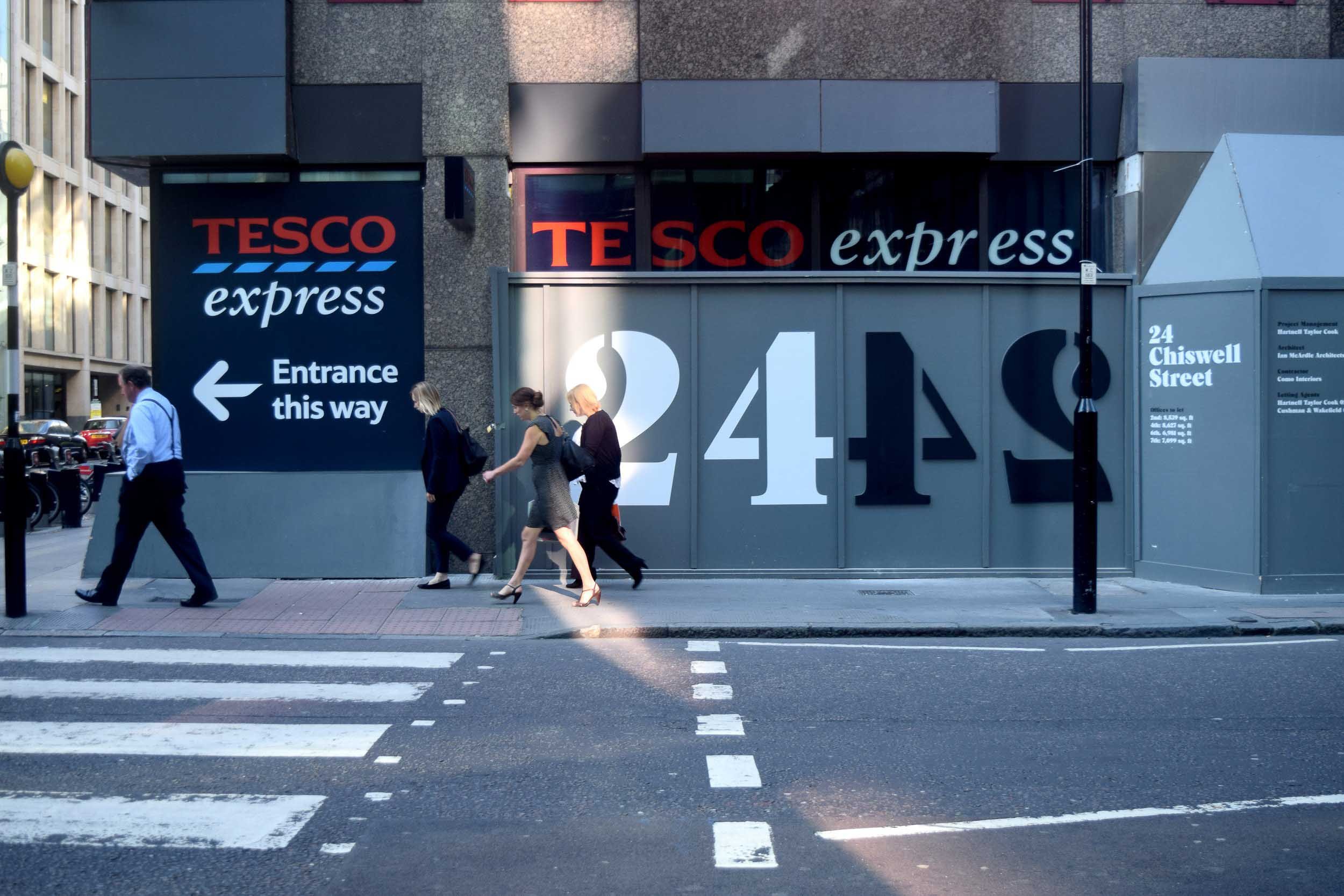
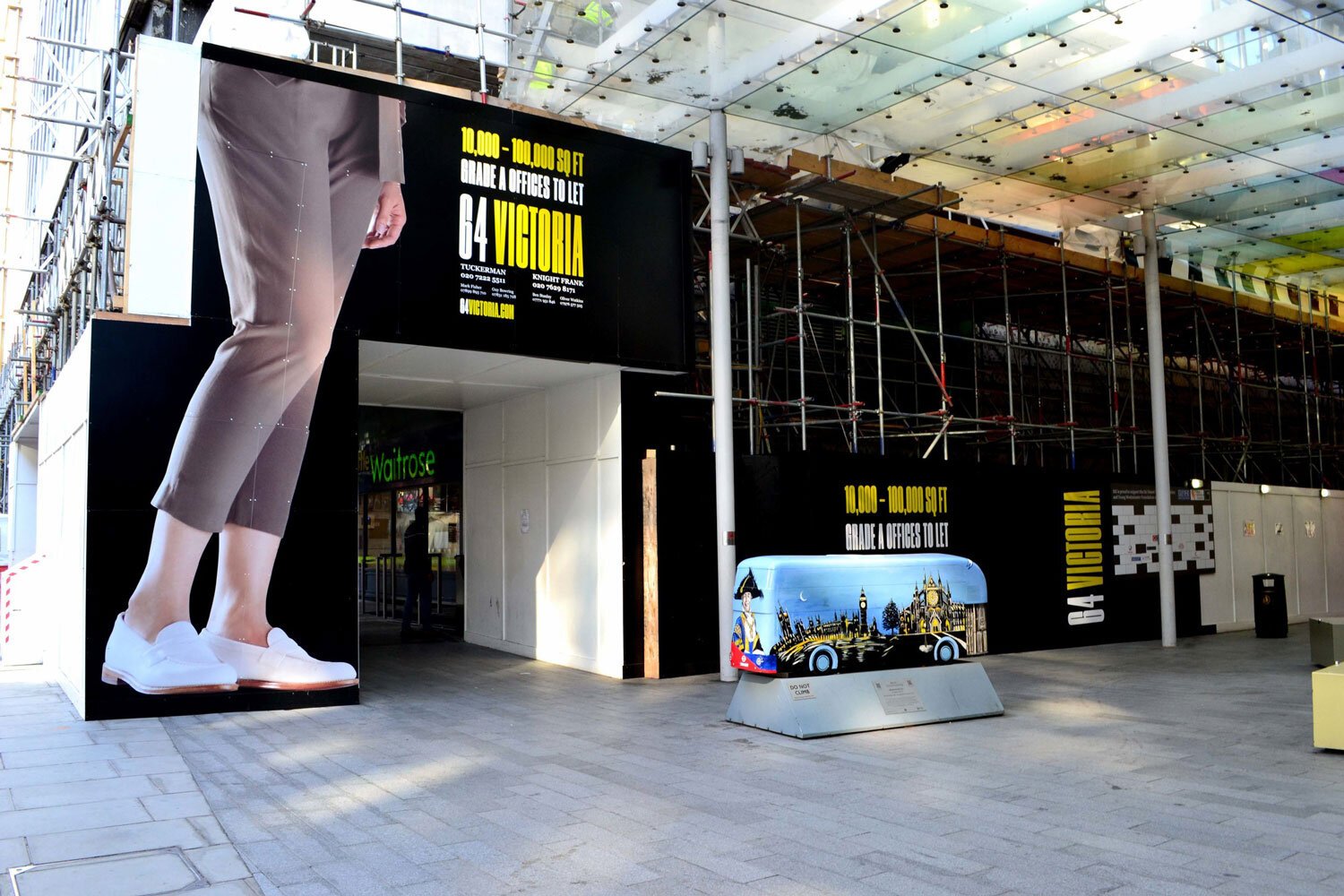
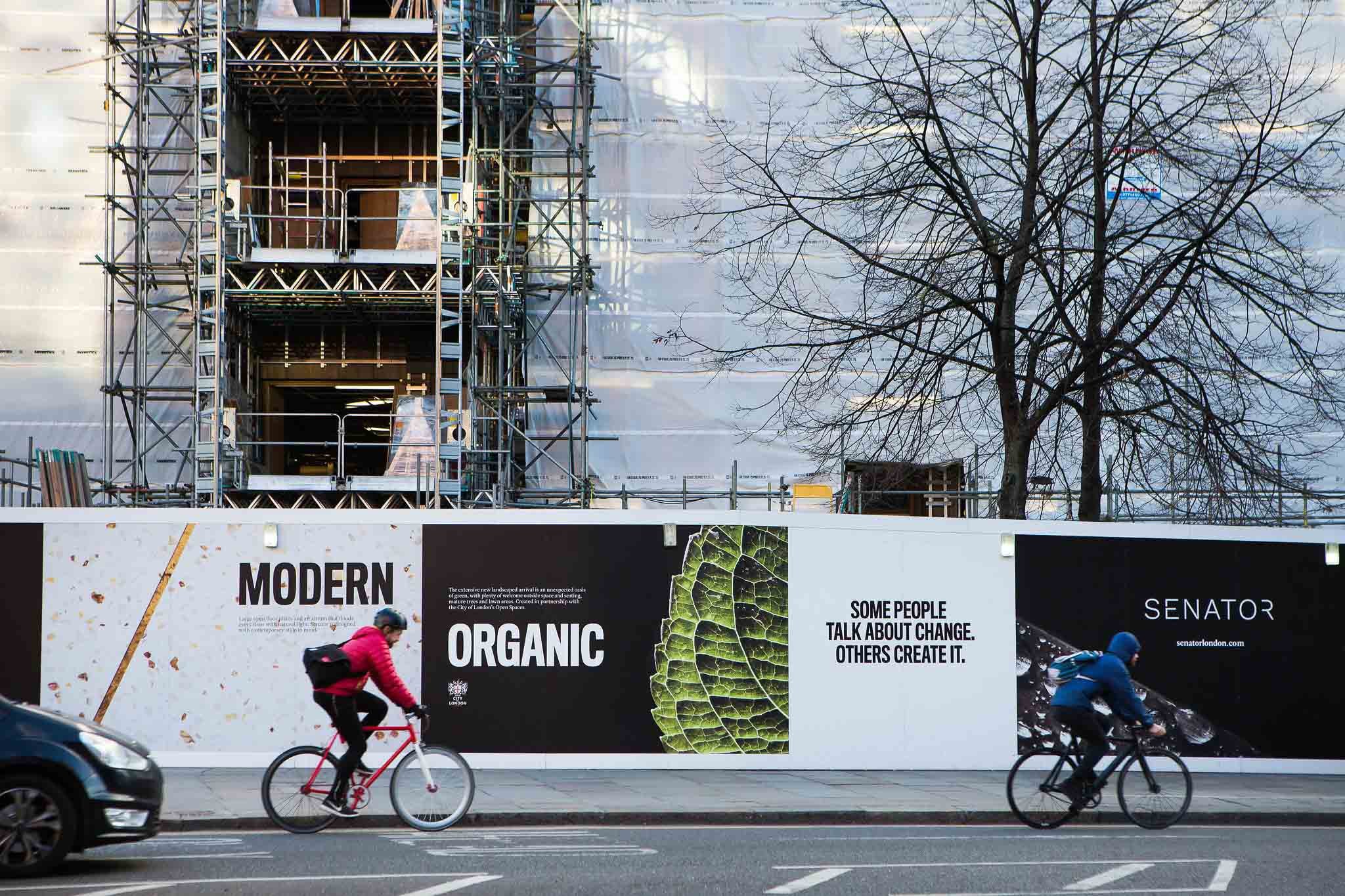

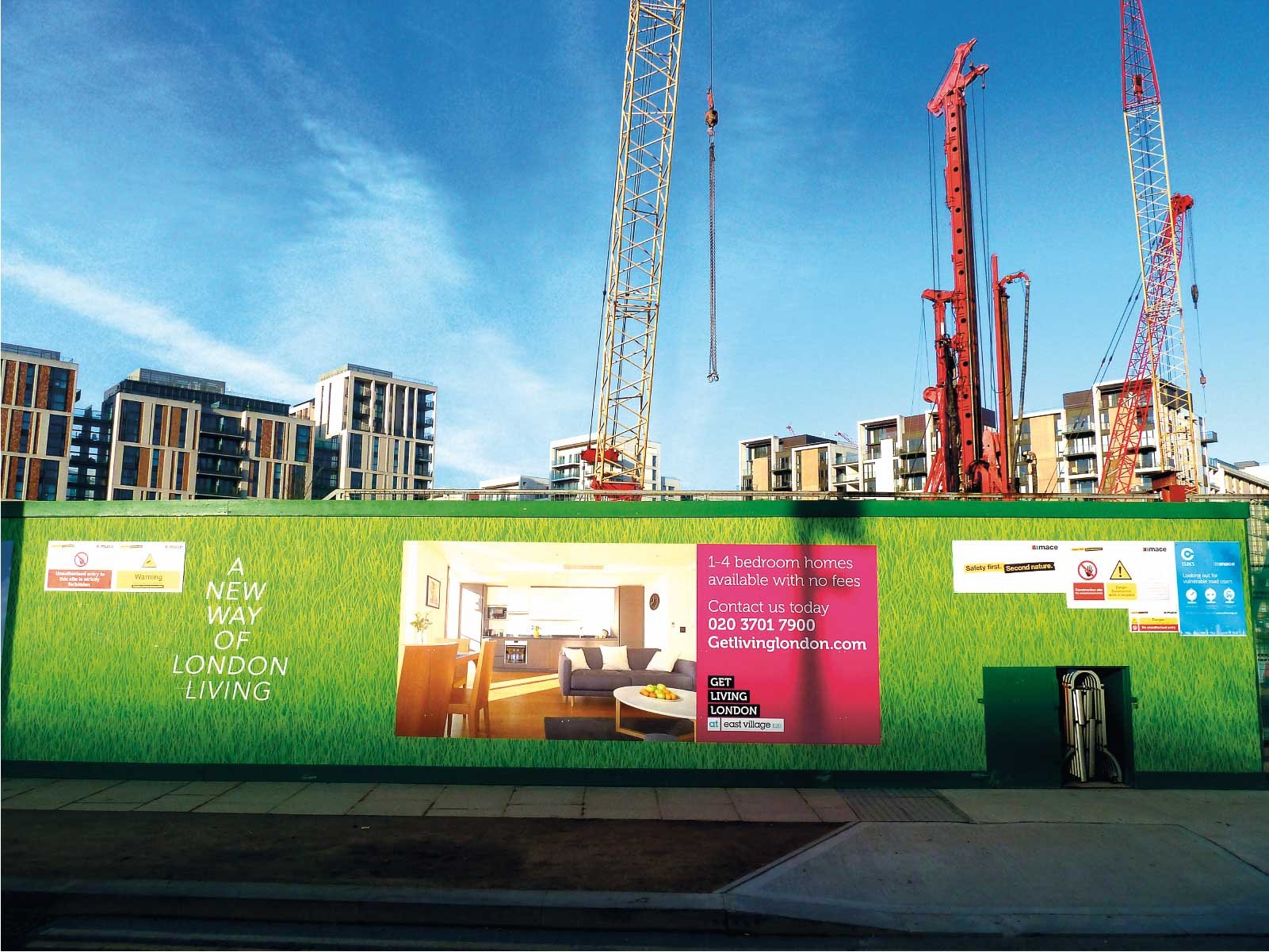
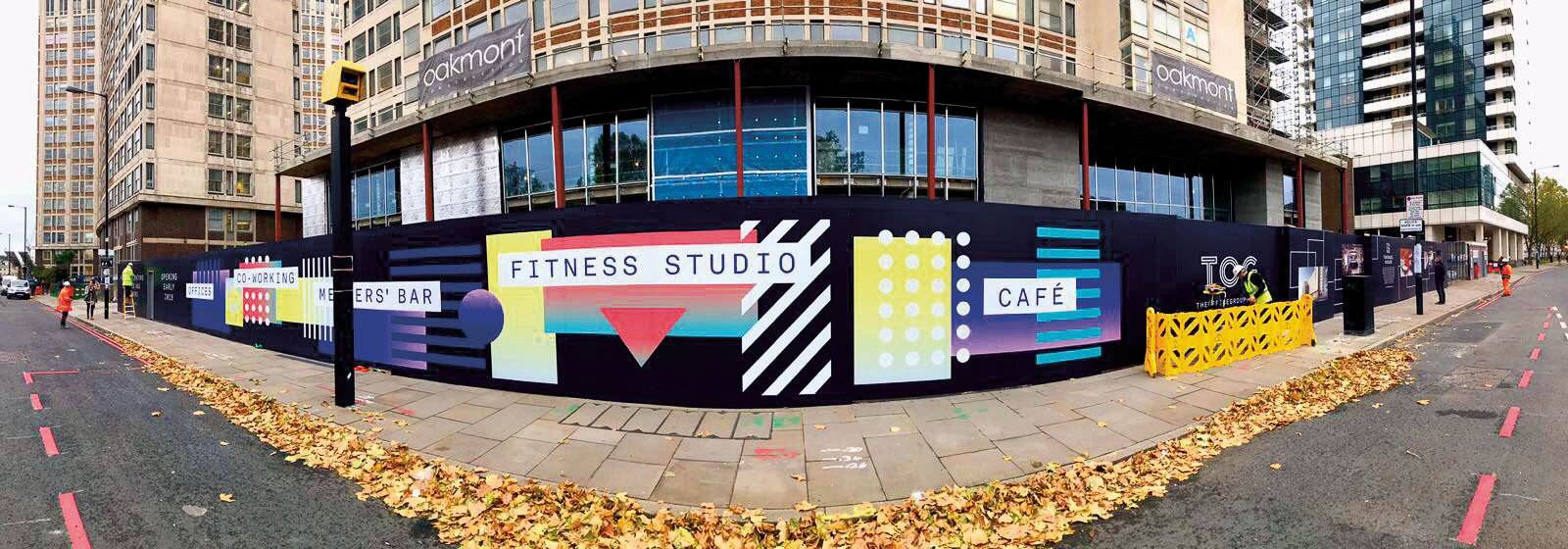






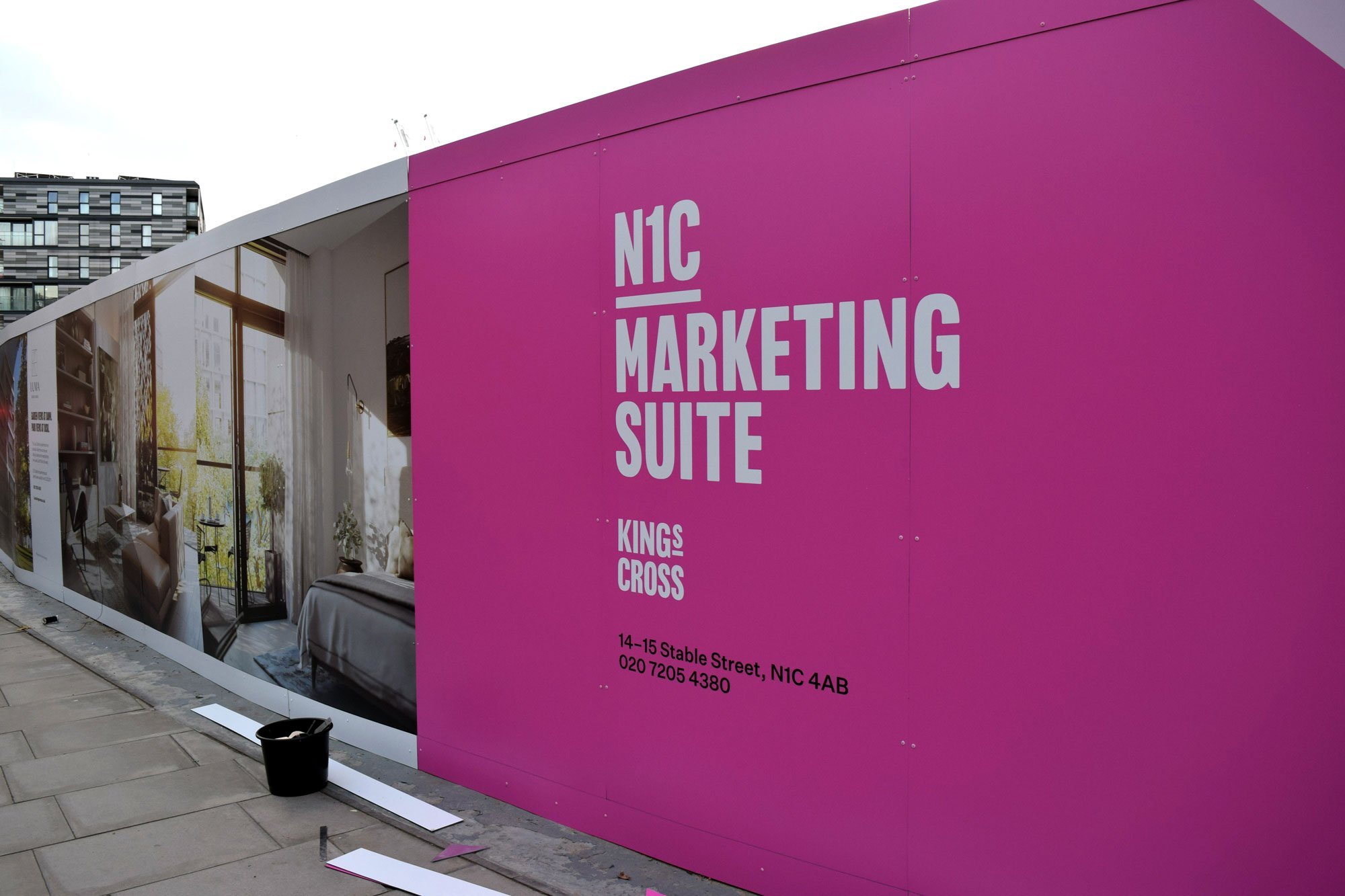
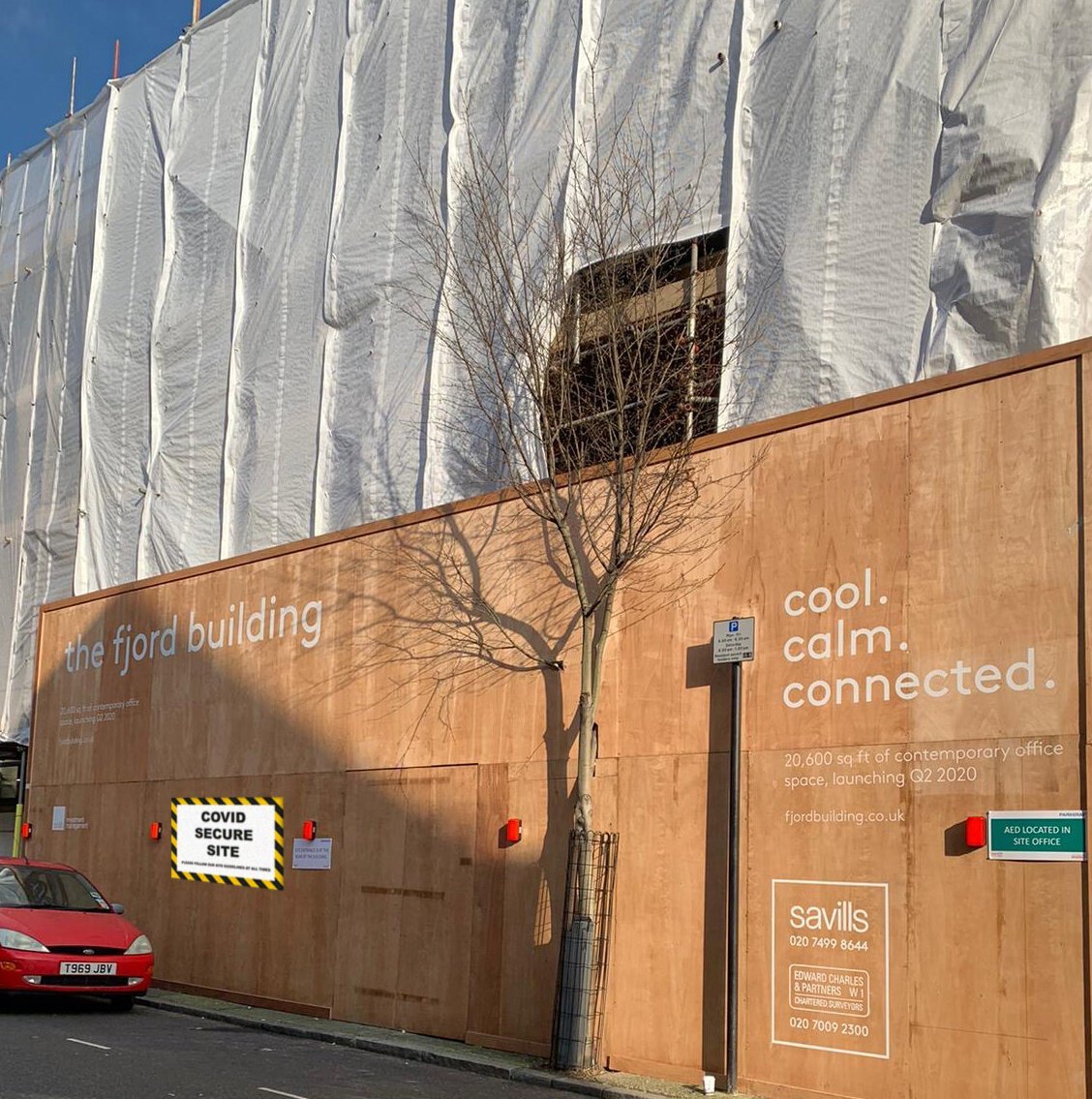


Hoarding Case Studies
More questions? No worries, we would love to talk to you!






